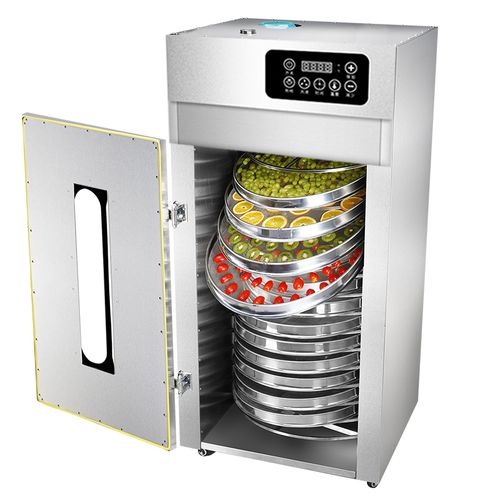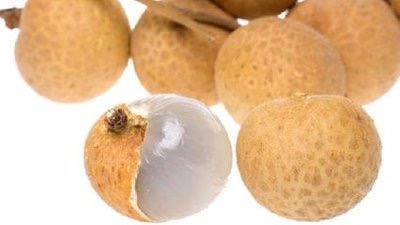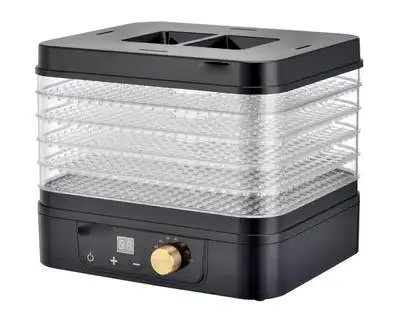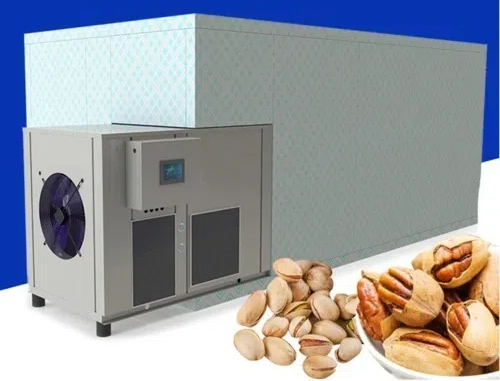
Content Menu
● Introduction
● Understanding Heat Pump Dryers
>>
● The Food Drying Process
● Applications of Heat Pump Dryers in Food Industry
● Energy Efficiency and Sustainability
● Challenges and Considerations
● Future Trends in Food Drying Technology
● Conclusion
● Frequently Asked Questions
>> 1. What is a heat pump dryer?
>> 2. How does the food drying process work?
>> 3. What are the benefits of using heat pump dryers in food processing?
>> 4. Are there any downsides to heat pump dryers?
>> 5. What is the future of food drying technology.
Introduction
Food dehydration is a crucial method for preserving food, extending its shelf life, and maintaining its nutritional value. As the demand for dried foods increases globally, the technology used in food processing must evolve. One such innovation is the heat pump dryer, which offers a sustainable and energy-efficient solution for food manufacturers. This article explores the significance of heat pump dryers in the food industry, detailing their operation, benefits, and future potential.

Understanding Heat Pump Dryers
A heat pump dryer is an advanced drying system that utilizes a closed-loop mechanism to remove moisture from food products. Unlike traditional dryers that expel hot air outside, heat pump dryers recycle the air within the system, significantly reducing energy consumption. The process involves evaporating moisture from the food, which is then condensed and collected, allowing for continuous drying without the need for external ventilation.
The advantages of heat pump dryers over conventional methods include:
1. Energy Efficiency: They consume less energy, making them cost-effective for large-scale food processing.
2. Temperature Control: Heat pump dryers operate at lower temperatures, preserving the quality and nutrients of the food.
3. Versatility: They can be used for various food types, including fruits, vegetables, and meats.
The Food Drying Process
The food drying process is essential for preventing spoilage and maintaining food quality. It involves several stages, including:
1. Preparation: Foods are cleaned and cut into appropriate sizes for drying.
2. Drying: The food is placed in the dryer, where hot air circulates, removing moisture.
3. Cooling: Once dried, the food is cooled to prevent condensation.
Different methods of food drying include freeze-drying, air drying, and using electric dehydrators. Each method has its advantages, but heat pump dryers stand out for their efficiency and ability to maintain food integrity.

Applications of Heat Pump Dryers in Food Industry
Heat pump dryers are increasingly being adopted in various sectors of the food industry. For instance, fruit processors use them to create dried fruits that retain their flavor and nutrients. Similarly, vegetable manufacturers benefit from the ability to dry produce without losing color or texture.
Case studies have shown that companies utilizing heat pump dryers experience reduced energy costs and improved product quality. For example, a fruit processing plant reported a 30% decrease in energy consumption after switching to heat pump technology.
Energy Efficiency and Sustainability
One of the most significant advantages of heat pump dryers is their energy efficiency. They can reduce energy consumption by up to 50% compared to traditional drying methods. This not only lowers operational costs but also minimizes the environmental impact of food processing.
The sustainability aspect of heat pump dryers is crucial in today's eco-conscious market. By reducing energy usage and waste, these dryers contribute to a smaller carbon footprint, aligning with global efforts to promote sustainable practices in food production.
Challenges and Considerations
Despite their benefits, heat pump dryers are not without challenges. The initial investment can be higher than traditional dryers, which may deter some manufacturers. Additionally, they require regular maintenance to ensure optimal performance.
Operational challenges may include the need for specialized training for staff to manage the technology effectively. However, the long-term savings and benefits often outweigh these initial hurdles.
Future Trends in Food Drying Technology
The future of food drying technology is promising, with ongoing innovations in heat pump systems. Advancements in automation and smart technology are expected to enhance the efficiency and user-friendliness of these dryers.
As the food industry continues to evolve, the integration of IoT (Internet of Things) technology will allow for real-time monitoring and adjustments, further optimizing the drying process. This will not only improve efficiency but also ensure consistent product quality.
Conclusion
Heat pump dryers represent a significant advancement in food dehydration technology. Their energy efficiency, ability to preserve food quality, and sustainability make them an ideal choice for modern food processing. As the industry moves towards more eco-friendly practices, the adoption of heat pump dryers will likely increase, paving the way for a more sustainable future in food preservation.

Frequently Asked Questions
1. What is a heat pump dryer?
A heat pump dryer is an energy-efficient appliance that uses a closed-loop system to dry food by recycling hot air, making it more sustainable than traditional dryers.
2. How does the food drying process work?
The food drying process involves removing moisture from food to prevent spoilage, using methods like heat, air circulation, and sometimes vacuum conditions.
3. What are the benefits of using heat pump dryers in food processing?
Heat pump dryers offer energy efficiency, reduced operational costs, and improved food quality by maintaining nutrients during the drying process.
4. Are there any downsides to heat pump dryers?
While they are energy-efficient, heat pump dryers can have higher initial costs and may require more maintenance compared to traditional dryers.
5. What is the future of food drying technology.
The future of food drying technology includes advancements in automation, smart technology integration, and further improvements in energy efficiency.












